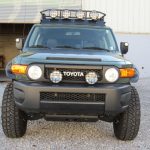One of the many areas where man has been consistently achieving new innovation, is the design and development of tools. We started with stones and now we use electric and air power tools.
Electric power tools are automatic tools that work on electric motor. Their advantage over the conventional hand tool is that they bring both efficiency and speed to the work and at the same time, save a lot of physical labor.
Electric power tools consist mainly of two types: stationary and portable.
Stationary electric power tools are bigger and more cumbersome and are used mainly by professionals at construction sites, garages, factories and other such places to do the larger tasks of sawing, drilling, bench grinding, and other similar activities. Some of the common stationary electric power tools are saws, electric sanders, routers, bench grinders, and lathes.
Portable electric power tools consist mainly of cordless power tools. They are different from stationary electric power tools in a way that they can be carried everywhere easily. They are usually smaller in size and perform smaller tasks. Under portable electric power tools, one can find cordless drills, cordless screwdrivers, cordless cutters, cordless flashlights, and countless other such tools.
Electric power tools and air tools are the two primary groups of power tools. Air tools, also known as pneumatic power tools, are powered by compressed air and are just as efficient as electric power tools. The main difference is the energy source, and air tools are generally considered to be cheaper and safer than electric power tools. Every power tool that is available in electric form can also be found in an air-tool form. Examples of air tools include air compressors, air grease guns, air hoses, air routers, air wrenches, and automotive air tools.
Some of the leading manufacturers of electric and air power tools are Makita, Ingersoll Rand, Snap-On and Chicago Pneumatic, DeWALT,Fuji Air Tools, Atlas Copco, and others.




Leave a Reply